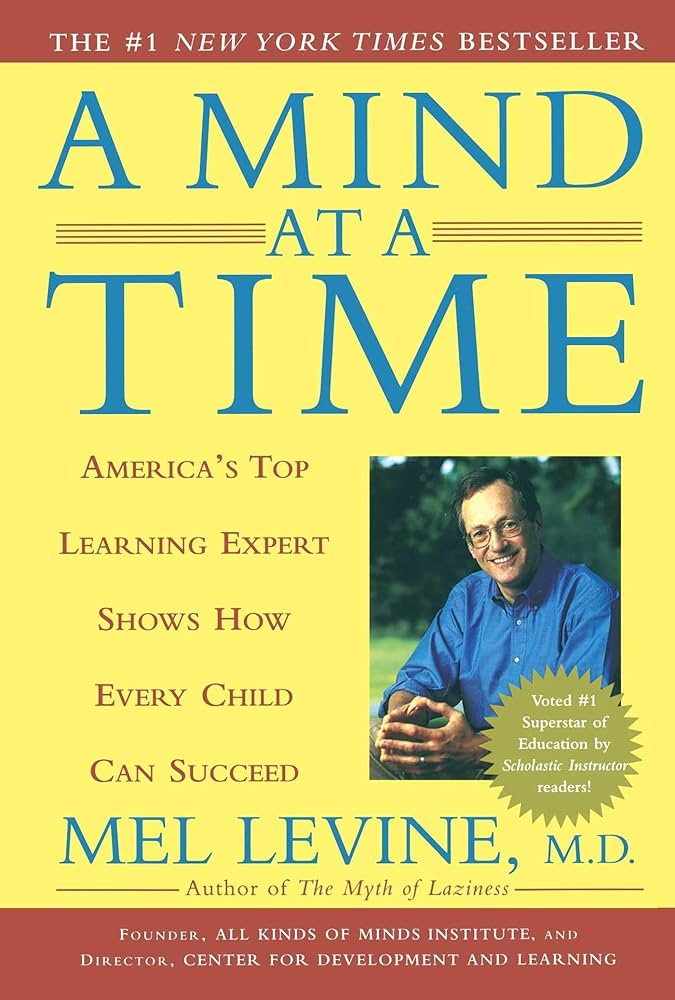
A Mind at a Time by Mel Levine
A Mind at a Time is a groundbreaking book by Dr. Mel Levine, which explores the various ways children learn and how educators and parents can help them achieve their full potential. Dr. Levine presents a comprehensive framework for understanding the different learning styles and the importance of addressing the unique needs of each child.
Introduction
In today's educational system, there's often a one-size-fits-all approach that fails to consider the individual differences in learning among students. Dr. Levine argues that recognizing and nurturing these differences can lead to better educational outcomes. His book provides insights and practical strategies to help children succeed based on their unique cognitive profiles.
The Neurodevelopmental Framework
Dr. Levine introduces a neurodevelopmental framework that categorizes learning processes into eight distinct systems. These systems include attention, memory, language, spatial ordering, sequential ordering, motor, higher thinking, and social thinking. Understanding these systems allows for a more tailored approach to education.
Attention Control System
The attention control system is crucial for learning as it involves the ability to focus, sustain attention, and shift attention when necessary. Children with attention difficulties may struggle in traditional classroom settings but can thrive with the right support and interventions.
Memory System
Memory is another critical component of learning. Dr. Levine emphasizes the importance of recognizing the differences between short-term and long-term memory and how these can impact a child's ability to retain and recall information. Strategies to enhance memory include mnemonics and organizational techniques.
Language System
The language system encompasses both expressive and receptive language skills. Children with language difficulties may have trouble understanding instructions or expressing their thoughts clearly. Dr. Levine provides tips for improving language skills, such as interactive reading and language games.
Case Studies
Throughout the book, Dr. Levine includes numerous case studies that illustrate the practical application of his framework. These case studies highlight how individualized approaches can make a significant difference in a child's educational journey. For instance, a child struggling with dyslexia may benefit from tailored reading programs and multisensory learning techniques.
Table of Neurodevelopmental Systems
| System | Description | Strategies |
|---|---|---|
| Attention | Focus, sustain, and shift attention | Structured routines, minimize distractions |
| Memory | Short-term and long-term memory | Mnemonics, organizational techniques |
| Language | Expressive and receptive language | Interactive reading, language games |
| Spatial Ordering | Understanding spatial relationships | Visual aids, spatial puzzles |
| Sequential Ordering | Understanding sequences | Step-by-step instructions, sequencing games |
| Motor | Fine and gross motor skills | Physical activities, motor skills exercises |
| Higher Thinking | Abstract and critical thinking | Problem-solving tasks, critical thinking exercises |
| Social Thinking | Understanding social interactions | Social stories, role-playing |
Parental Involvement
Dr. Levine stresses the importance of parental involvement in a child's education. He suggests that parents should work closely with teachers to develop individualized learning plans that cater to their child's strengths and weaknesses. Engaging in regular communication with educators and being proactive in addressing concerns can lead to better outcomes for children.
Conclusion
A Mind at a Time is a valuable resource for parents, educators, and anyone interested in understanding the complexities of learning. Dr. Levine's approach underscores the importance of recognizing and nurturing individual differences in children. By doing so, we can help each child reach their full potential and thrive in their educational journey.
For more insights and resources on child psychology and educational strategies, visit our website: Read Review Talk and check out our blog.



